
FOLLOW ME ON INSTAGRAM: @woodywoodburn
*
Hemingway’s Home
Is The Cats’ Meow
A seven-block walk from the celebrated red-black-and-yellow concrete buoy marking The Southernmost Point in the Continental United States brought me to the North Star: The Ernest Hemingway Home & Museum.
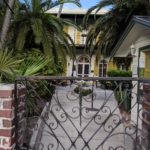
Inside the brick wall and front gate awaits the home.
Nestled in the heart of Key West’s Old Town, the white-black-and-gold manor at 907 Whitehead Street is where the master wordsmith lived for a prolific writing span from 1931 to 1939. In 1968, seven years after Hemingway’s death, the estate became a registered National Historic Landmark.
Architecturally, the home seems transplanted from the French Quarter in New Orleans with a black wrought-iron balcony wrapping around the second story. Floor-to-ceiling arched windows framed by gold shutters add to the southern charm.
Majestic trees, including skyscraper palms, surround the home. The one-acre lush grounds are in turn framed by a brick wall, tall as a man. Not surprisingly, there is a tale behind the wall.
It seems that when the town’s red-brick streets were being torn up in 1938, Hemingway and some pals, including renowned Sloppy Joe’s Bar owner Joe Russell, surreptitiously followed behind the work wagons helping themselves to Baltimore pavers. After the pilfering was discovered – for the bricks had in fact not been headed to the scrap heap – Hemingway settled up by paying a penny apiece.
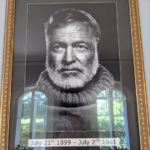
A Hemingway portrait greets visitors inside.
The wall had become necessary because of an earlier visit to Key West by President Franklin D. Roosevelt. To capitalize on the event, a map was printed for tourists and among the sites highlighted was Hemingway’s home complete with address. Suddenly, strangers were knocking on the front door and roaming the property uninvited.
Emphasizing the dangers of the period, Hemingway expert Chris Parsons told me in a private visit following a public tour: “Key West was like the Wild West when he lived here. You needed a knife or gun if you went out on street after dusk. Hemingway, of course, didn’t need a weapon because he was larger than life – ”
Nodding towards the brick wall’s entranceway, Parsons added, “ – with a gait wider than that gate.”
Strolling through that gate an hour earlier, I was immediately greeted by a sense of overwhelming reverence. In my mind’s eye, I could see Papa Hemingway; in my heart’s imagination, I felt his presence.
Too, I was greeted on the front porch by a grey tabby rubbing up against my leg. Inside, more cats awaited. In some rooms, the felines seemed as numerous as the butterflies at the nearby nature conservatory.
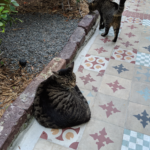
The famous six-toed Hemingway cats roam everywhere, outside and inside.
It turns out about 60 cats live out their pampered nine lives at Hemingway’s home. To give you an idea, they are even allowed to sleep on the priceless antique furniture that is roped off from the public visitors.
The resident cats are of all shades and colors: gray, black and white, red. Most are likely distant descendents of a Snow White, a rare six-toed cat given as a gift to Hemingway from a local boat captain. Six-toed cats, even black ones, were considered good luck at the time.
Cats normally have five toes on each front paw our tour guide informed us, but the majority of the Hemingway housecats are “polydactyl” meaning they have six front toes. The polydactyls are easy to spot because their paws are so large it looks like they are wearing mittens.
“One cat leads to another,” Hemingway liked to say of his caboodle, although he had fewer back then than the current five dozen.
He also liked to name his cats after famous people, a practice that continues today with Lucille Ball, Winston Churchill and Cary Grant among those all in current residence.
To be continued next week.
* * *
Woody Woodburn writes a weekly column for The Ventura County Star and can be contacted at WoodyWriter@gmail.com. Follow him on Twitter and Instagram at @woodywoodburn. His books are available at www.WoodyWoodburn.com.
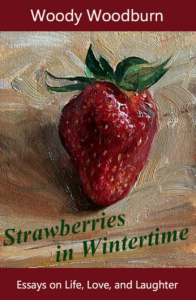
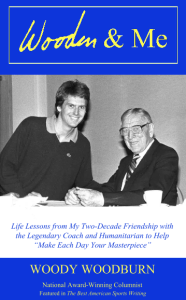 Check out my memoir WOODEN & ME: Life Lessons from My Two-Decade Friendship with the Legendary Coach and Humanitarian to Help “Make Each Day Your Masterpiece” and my essay collection “Strawberries in Wintertime: Essays on Life, Love, and Laughter” …
Check out my memoir WOODEN & ME: Life Lessons from My Two-Decade Friendship with the Legendary Coach and Humanitarian to Help “Make Each Day Your Masterpiece” and my essay collection “Strawberries in Wintertime: Essays on Life, Love, and Laughter” …
- Personalized signed copies are available at WoodyWoodburn.com
